Improving page titles is one of the quickest ways to get more clicks to your page from the organic search listings in Google. Crafting a page title that is more attention-grabbing to the user is an easy way to increase the click-through rate , and therefore the number of clicks, without having to improve the actual rank of the page.
So what makes the perfect page title? That is where SEO testing comes in.
SEO testing can help you figure out the best page title for a page by tracking the results before and after your page title changes or by running SEO split tests against a group of templated page titles you changed and a group you’ve left the same.
As page titles are usually the easiest thing to update for a page, they lend themselves nicely to SEO testing. In the SEO world, page title optimization is known as ‘low-hanging fruit’ as they are easy to change and can give quick results.
In this article I’ll run through why you should be running SEO tests on page titles with some great examples from SEOTesting customers, how to actually do it (with the tools required), and the best SEO test types for you to use.
I’ll also be giving you some ideas on things to test, best practices for your page titles, and ways to identify the ‘low hanging fruit’ pages that have a low click-through rate and are ideal for some page title optimization.
Table of contents
- Why Run SEO Tests on Page Titles?
- How to SEO Test Page Titles
- Best SEO Test Types for Page Title Tests
- Page Title Best Practises & Things to Test
- How to Find Page Title SEO Testing Opportunities
Case study #1

“Testing page Titles and Descriptions has been a big win for me. I wanted to increase CTR, with the aim eventually of seeing average positions move positively. I researched keywords and phrases through SEOtesting data, and identified the terms I really wanted to improve the CTR for. I wrote them with intent in mind, but also I did something slightly different for the Meta Description. Normally, I’d write them in a “salesy” way, enticing people to click onto the page, but instead, (knowing that Google re-writes them based on intent and the keyword a user has typed in), I wrote them as a definition, or what i’d expect Google to pull from the page based on that keyword I’m optimising for.”
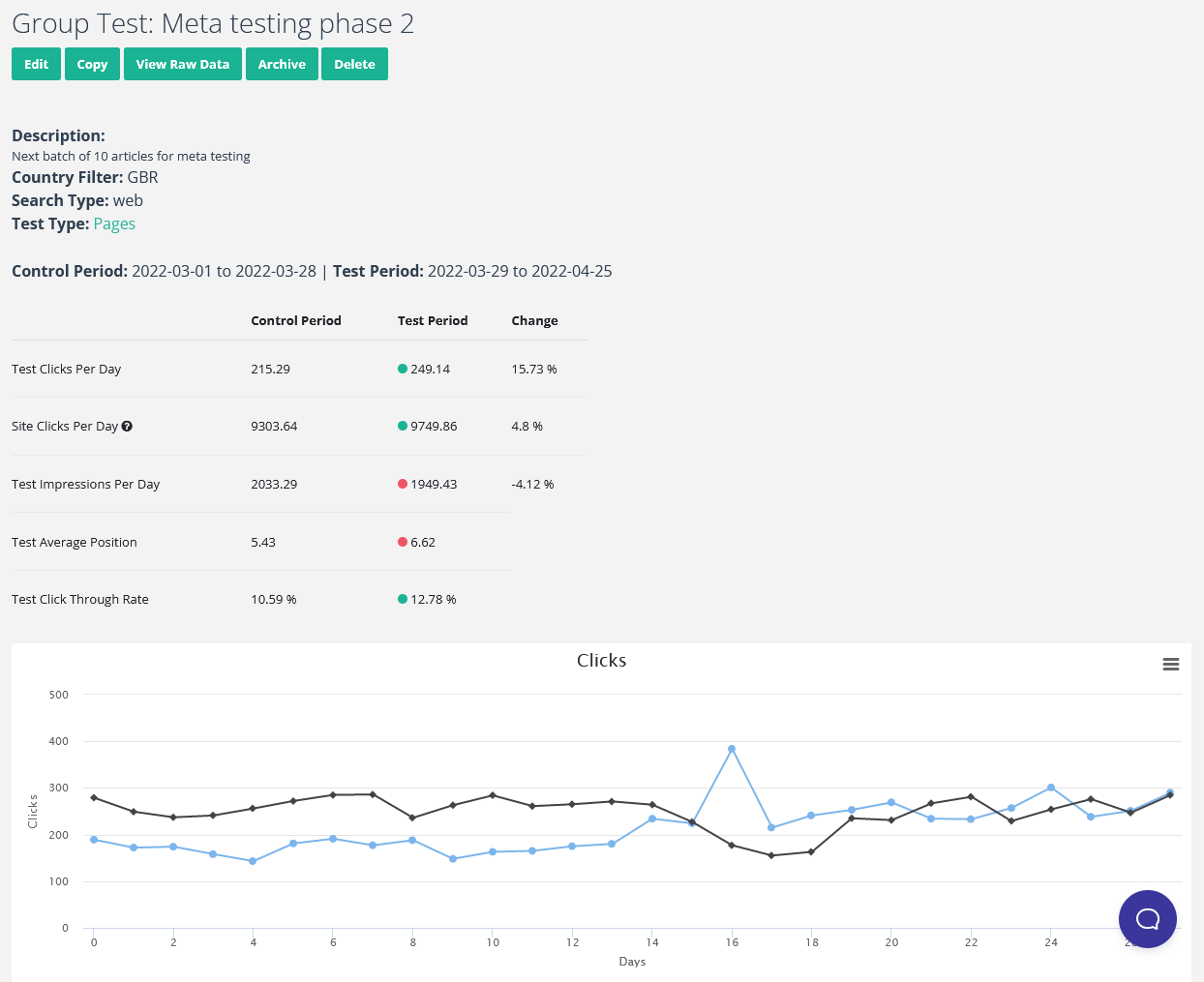
“This seems to have helped, and even in manual checks, I’ve seen the correct meta description pulled in. So in a nutshell, being able to test this has given me confidence to continue optimising page titles and descriptions and track the results accurately through SEOTesting.”
Why Run SEO Tests on Page Titles?
There are a number of reasons why you should add page title optimization into your standard routine as an SEO professional.
The biggest reason I can give you for testing your page titles regularly is that it gives you the best chance of regularly improving your click-through rate (CTR). Your click-through rate is the percentage of people who see and click your listing in the SERPs, so it is a vital metric, and you must ensure it is in good shape. Let’s say you have 10,000 impressions and your CTR is 1%, you’re generating 100 clicks to your site. If you can improve your conversion rate and get it to just 2%, you’ve doubled the number of clicks going to your page from the SERPs.
During the recent United States Congressional Hearings involving Google, it came to light that User Intent Signals such as click-through rate, bounce rate, and time spent on the page are used in calculating where a page ranks in the search results. So if getting more clicks by improving a page’s click-through rate isn’t enough, your click-through rate is likely to indicate to Google how closely your page matches a user’s search intent. With a high click-through rate achieved, you will show the user intent and your page match, and I would be confident you’ll see an improvement in page ranking.
Secondly, SEO testing on page titles is usually quite easy. It’s normally a very simple process, no matter what CMS you’re using, to change the title tags for your pages. You can start by simply changing the page title of a single page and tracking how the click-through rate performed in the Google Search results before and after. If you have a site with lots of template-based pages (for example e-commerce site with product or category pages), you can run an SEO split test. For this test type, you create a test group (the pages with titles you will be changing) and a control group (pages where you will not change the titles). This will allow you to effectively SEO split test your page titles by seeing how the test group of pages performs compared to the control group.
Another good reason to be improving your page titles and using SEO tests to record the results of these changes is page titles themselves are a ranking factor. John Mueller confirmed this as recently as September this year. Including the page’s target query in the page title is an easy thing to do, it’s a no-brainer to make this part of your monthly SEO work and SEO standard operating procedures.
If you are just getting started on your SEO testing journey, starting with something easy to implement, easy to track, and easy to get results from is a win, win, win.
This will give you the opportunity to use a successful page title test to show the impact you can have on a high-value page, and you will find it easier to get buy-in for bigger SEO changes and tests.
How to SEO Test Page Titles
Answering this specific question really depends on a few factors. If you are running a popular CMS like WordPress, Wix, or Ghost, then you will find it is usually as simple as making a change to your page title within the CMS itself. This is especially true in WordPress as they have two extremely popular SEO plugins, Yoast and Rank Math, that make changing page titles at will an incredibly simple job.
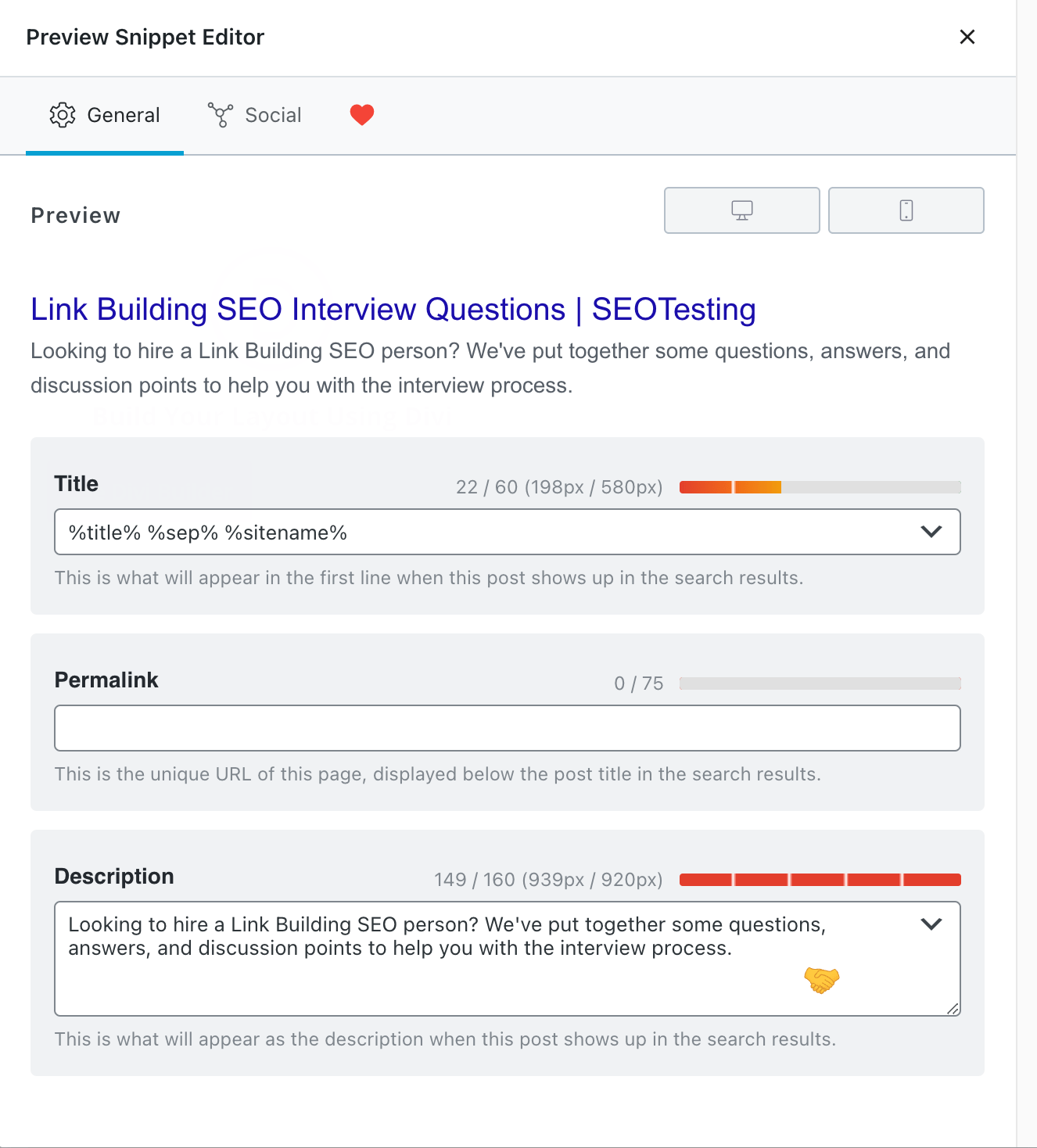
Sometimes, however, it can be a little more difficult and may even require a ticket to be created with your development team. If you do not have a CMS like WordPress that makes it easy to change your page titles, you may find that you have to do this within the HTML of your web page. This can be incredibly time-consuming, especially if you want to test a group of pages at the same time.
If your site and page titles are template based, the task may be more involved and require your development team and code changes.
Tools Required
There are a few tools you will need access to if you are planning on conducting regular SEO page title testing for your business or on a client website.
The first thing you will need is access to the relevant Google Search Console site property. This is what is going to give you that sweet, sweet impression, click, and click-through rate data so you can calculate whether the page title changes give a positive result.
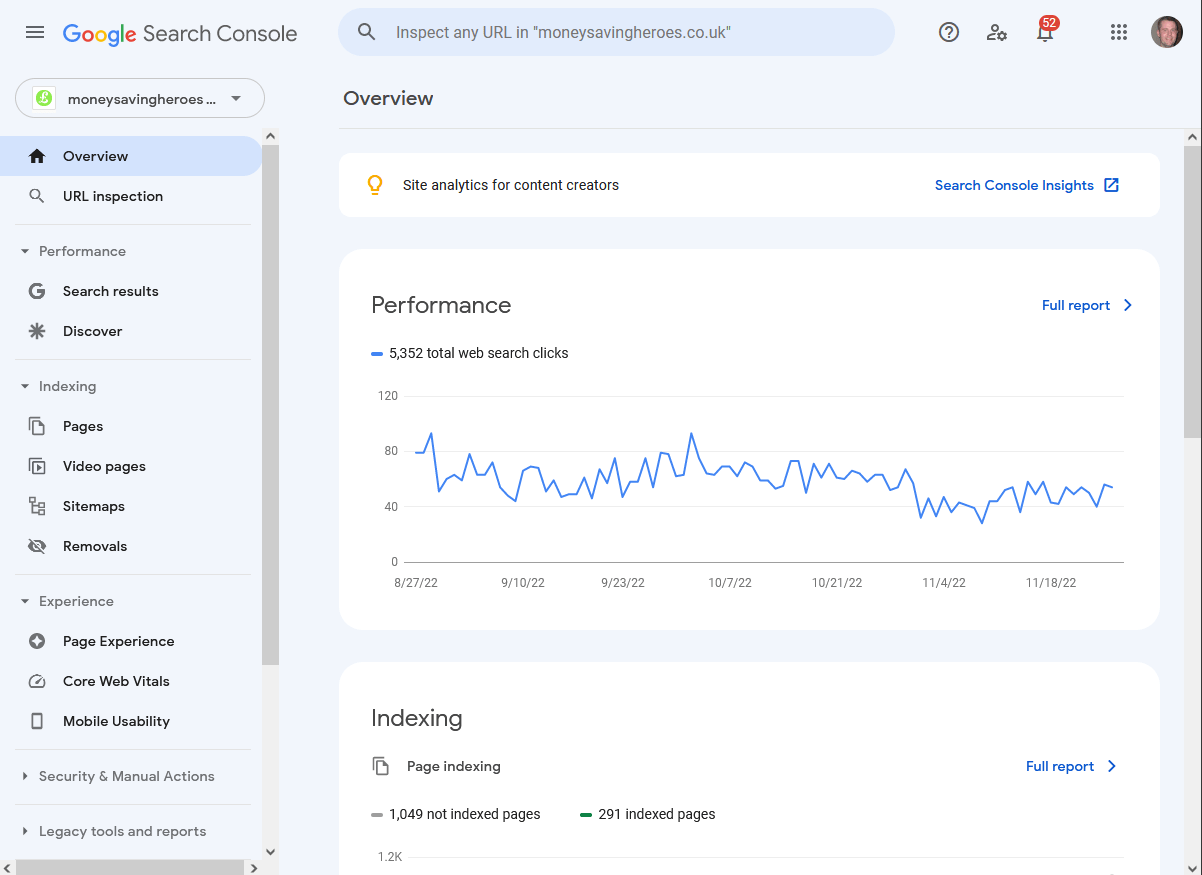
You will also need access to spreadsheet software such as Google Sheets, Microsoft Excel, or Apple Numbers. This is so you can note down the daily impression, click, and click-through rate data so you can come back at the end of the testing period and establish whether the test is successful or not. You’ll also need to link to the relevant Search Console property with pre-configured filters within your test sheets.
If you are impatient like me, you’ll want to check how the click-through rate changes daily, which means checking Google Search Console each day it updates. This can be quite a manual process if you are testing multiple pages at the same time.
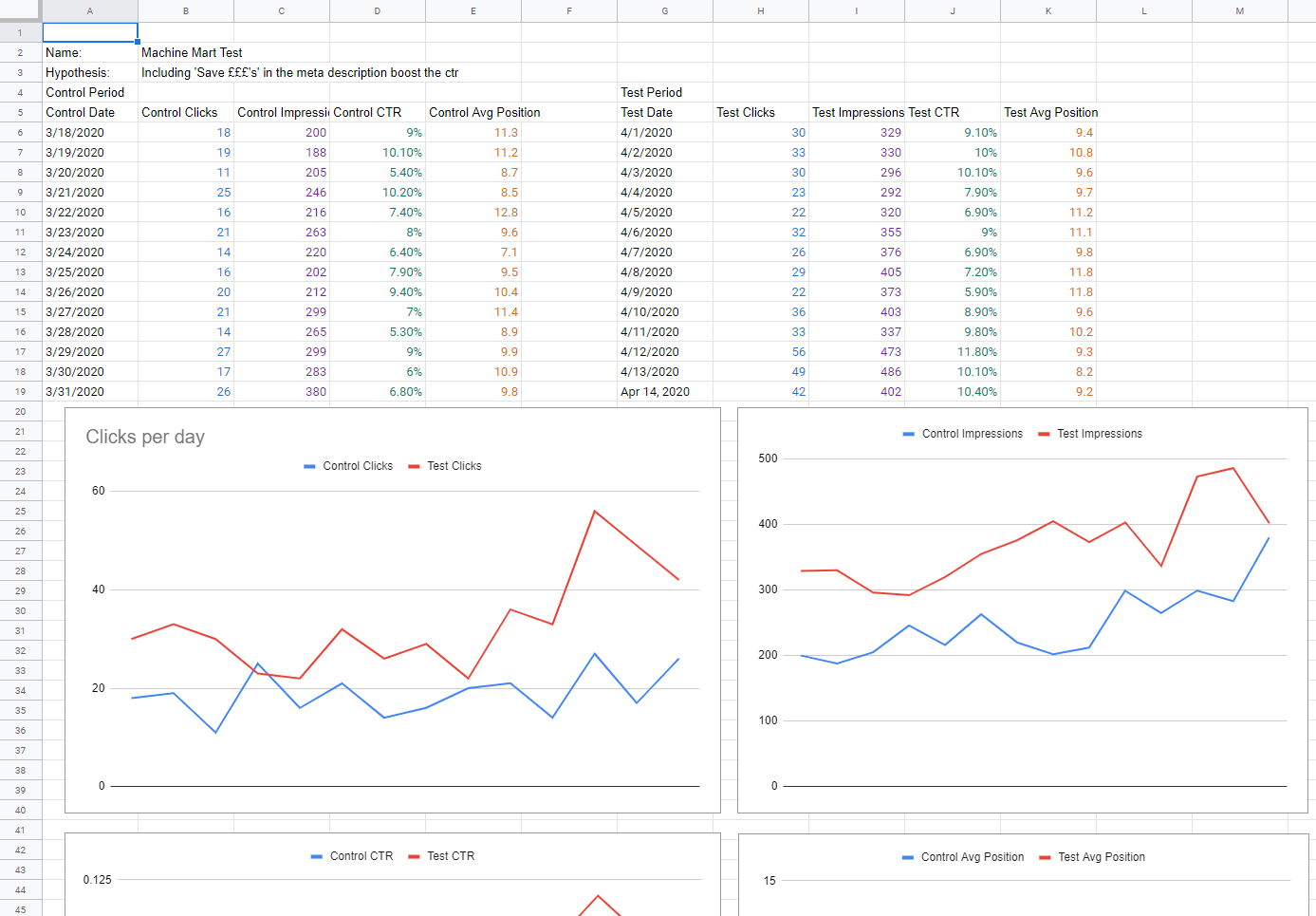
Sound like a lot of effort for an “easy” SEO test? You are right. Not only does this include a lot of setup work, but it also requires you or another team member to head into GSC daily to collect the necessary data.
Time-consuming and fiddly, right? There is an easier way.
At SEOTesting, we have made it our mission to make SEO testing easy, simple, and effective for everybody. It means we’ve automated the process of collecting the data and generating your SEO test results in easy-to-understand reports. All you need to do is add the URL or URLs for the page(s) you want to test, explain a little about your hypothesis and the change you are making, and then define the time period for your test.
SEOTesting, quietly in the background, will collect all the necessary click, impression, and click-through rate data directly from GSC and place it into an easy-to-read scorecard summary and graphs for you and your team to review. Not only do the graphs make it easy for you to read and understand, but it makes it easy for you to share with your clients or management. You can also directly download PNG files of the graphs so they can be placed into reports.
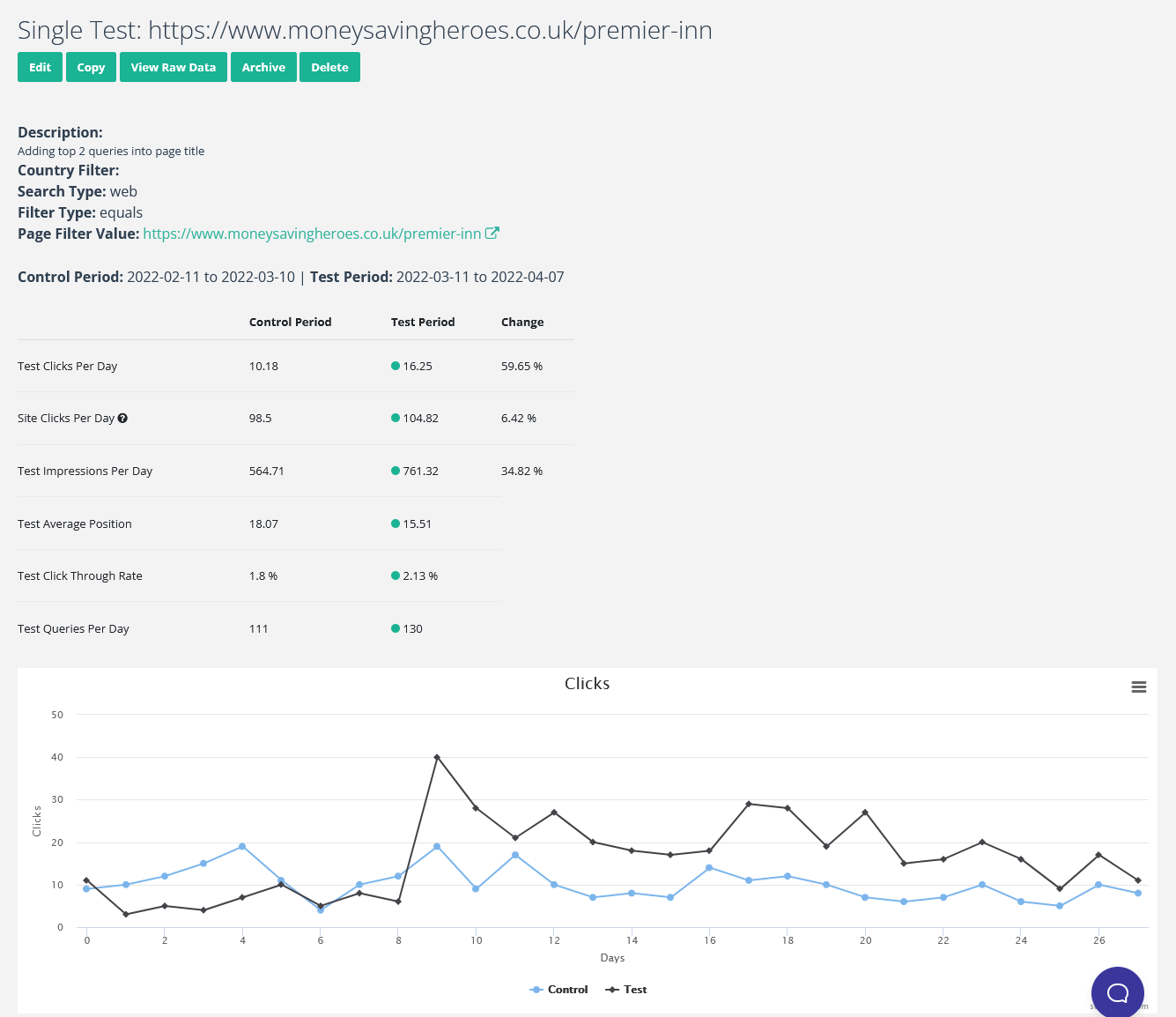
If you’re interested in giving SEOTesting a try, you can sign up right now for a 14-day free trial with no credit card required. Simply sign-up for an account, connect your GSC account, and off you go. 14 days of SEO testing, on us.

Best SEO Test Types for Page Title Tests
There are two main types of SEO tests.
Time-based SEO testing compares your page or a group of pages that have been changed, before and after, to see how the organic SEO performance has been impacted.
SEO split testing is where you take a number of pages of the same type eg, product listing pages. You split these into two groups, one group you change (test group), and the other group remains the same (control group). You can then compare how the test group fares against the control group to see how the changes have affected the SEO results.
If you manually collect data from Google Search Console, you will likely be limited to doing time-based testing on individual URLs. This is simply because the time it takes to look up the data makes split testing 40+ URLs impossible.
SEO Testing
Time-based testing is the easiest test type to set up. All you need to do is change the page titles within your CMS, ask Google to reindex the impacted page, and collect the performance data.
If you are manually collecting the data from Google Search Console, one tip that’ll help save you lots of time is to save the Search Console URL once you have selected all your date and page filters in your spreadsheet. This will mean you can click the URL each day you want to check for updated results rather than manually configuring the filters each time.
As the days progress and Google Search Console updates, you can compare your data from the time before your page title change, to the time after. Generally, for page title testing, click-through rate is the metric you will pay the most attention to.
There are a couple of variations of time-based testing that will work well, depending on your website and the number of page titles you are looking to change at the same time.
Single SEO Test
Using time-based SEO testing on a single page is a very simple process. Simply make the page title change you want, note the time period for the test, and start collecting your data at regular intervals.
You can track the results the manual way, using Google Search Console and a spreadsheet, or SEOTesting can track the results for you automatically each time Search Console updates.
Group SEO Test
If you want to change the page titles for a number of URLs at the same time and run them as a group test, this is an option in SEOTesting.
I wouldn’t advise running a group test and collecting the data manually from Search Console as the data collection will quickly become tedious and time-consuming.
Use the tooling available such as SEOTesting, to help save you time and automate this.
SEO Split Testing
SEO Split testing involves splitting a number of pages into two separate groups, your control group and your test group. The control pages are left completely unchanged and they act as a benchmark for your test pages. Your test pages are the pages that are changed, whether you’re conducting a page title test or another type of SEO test. You’ll be looking for an improvement in clicks, impressions, and click-through rate from your test group compared to your control group.
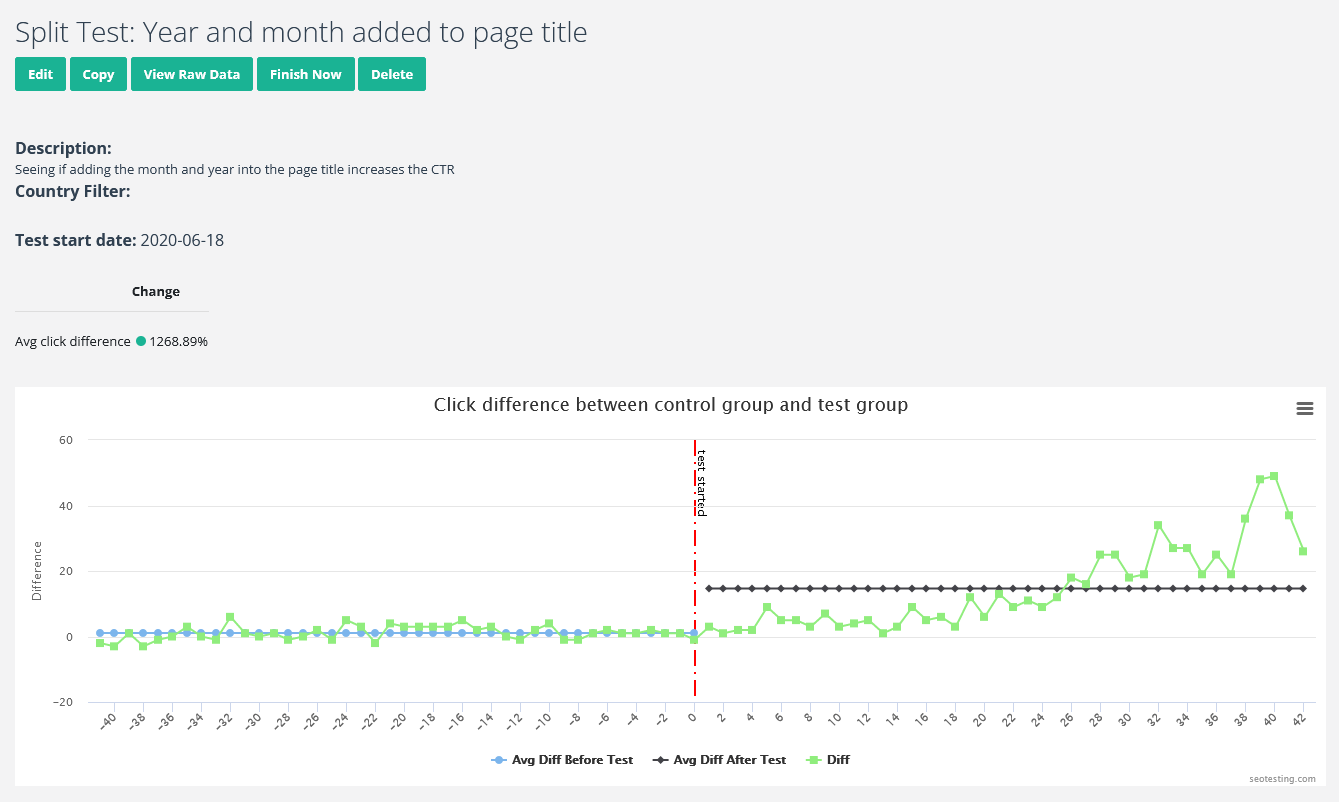
Split testing is ideal for:
- eCommerce PLPs (Product Listing Pages)
- Directory listing websites
- Websites with category-type pages
This is because a lot of these pages are often similar, for example PLPs are often almost completely identical pages in terms of structure, with only the products displayed and text being different. This makes a PLP a perfect candidate for a split test.
Page Title Best Practises & Things to Test
When it comes to actually testing your page titles, we would start off by making sure you have implemented some best practices. If you aren’t employing some of these on your website, chances are you are leaving some click-through rate on the table.
Include Relevant Queries
One of the first things you should be testing, if you do not do this already on your website, is ensuring you include your target query, and any other highly relevant top queries a page is ranking for, within the page title.
Generally, when users type a search query into a search engine, they look for specific information. That could be “weather in Torquay” or “men’s size 13 leather walking boots”. If you can make your listing look attractive to the relevant queries, for example by including those queries within the page title, then you should be doing this.
Case Study #2

We used the Top Query Per Page report in SEOTesting to identify which high impression keywords the page was ranking for. We then included a couple of these within the page title which led to good results for each test metric we can track.
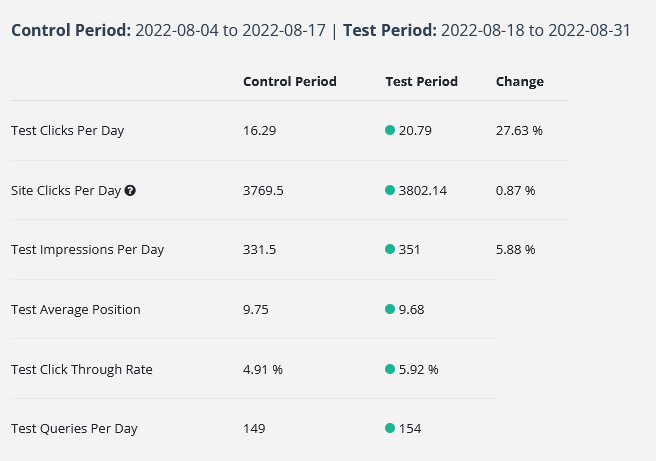
Include the Date (If Relevant)
We know that two of Google’s ranking factors are freshness and relevance, which means in certain scenarios, having newly published content can be an advantage when it comes to ranking above competitors. This is especially the case if you run a news website.
If you run a website that relies on being updated regularly, it may be worthwhile adding dates to page titles to see if the click-through rate improves. If people are looking for up-to-date content, then having the newest content in the SERPs can be a huge advantage to you.
Case Study #3

We wanted to test whether the click-through rate improved if we added the month as well as the year on our product review page. We were pleased with the result of this test, a nice improvement for such a small change. It gave us the push to test this on other pages.
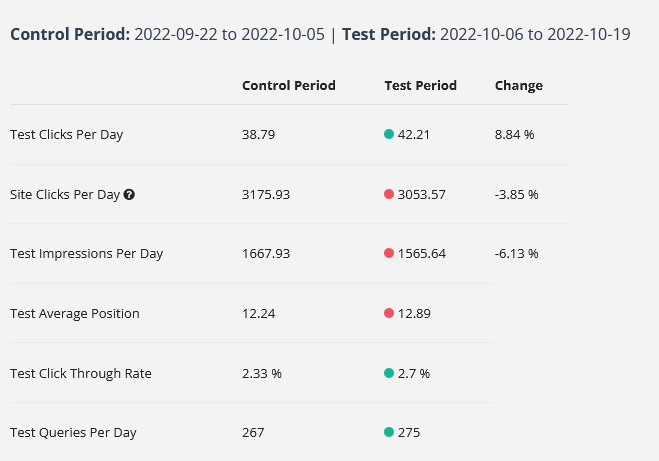
Include the Price, Offer, and/or Details
Especially useful for eCommerce websites, if you are looking at completing a page title test on a page where there is a price, offer/discount, or other crucial buying details listed, it would be worth adding this into the title to see if there is any improvement in click-through rate.
For most consumers, price is a massively important factor in whether they purchase from your site. If you have an offer in place that makes your site’s pricing more competitive, show that off. Users are sure to be more tempted to click.
Including or Removing your Brand
It’s common for websites to display their brand name within the page title, but what if you tested the impact of removing it?
We know that Google generally limits the length of page titles, so you need to get as much useful information to your reader as possible in this short space. Removing your brand name gives you more characters to add information that will help persuade your user to click your result ahead of all of your competitors.
Likewise, if you’re a big recognizable brand like IKEA, Wayfair, or Ford, it may be good practice to have your brand name included within your page title because it will add another layer of trust to your listing, which in turn may improve your CTR.
What we are suggesting here is to do the opposite of what you’re currently doing. If you do not display your brand name within your page title, then add it in and see what impact the change has. Likewise, if you have your brand name within your page title, remove it and observe the results.
Using Numbers
Using numbers is perhaps one of the easiest things you can do to have a positive impact on your click-through rate. We know that users respond well to numbers being used within page titles, especially in blog posts or digital PR-style content.
A few good title examples include:
- “5 ways to optimize your pages for SEO”
- “Over 87% of the British public prefer working at home rather than the office.”
- “Man spends over £10,000 to look like David Beckham.”
** Note, these are not real statistics, they have been made up to prove a point.
If you do not currently use targeted numbers within your page titles, you should test this to see if you can have a positive impact on your traffic and rankings.

How to Find Page Title SEO Testing Opportunities
Having mentioned some things to test on your page titles, how do you find page titles with a low click-through rate that are ripe for some optimization?
Missing Title Tags
It’s extremely common, especially for large websites, to have pages that have completely empty page title tags!
It’s unlikely your page is going to rank well, especially for the queries you are targeting it at, if it has blank or no title tags at all.
To find the pages you have on your website that are missing title tags, simply run a crawl of your website using ScreamingFrog, Sitebulb, or another crawler. This will then give you a list of pages that do not have a title tag implemented.
Your next step is to add in these page titles, reindex the changes with Google and then add these pages into SEOTesting and watch as your CTR improves.
Duplicate Title Tags
Much the same as missing title tags, lots of large websites (generally due to CMS issues) also have a lot of duplicate title tags. We’ve been told for so long that we should avoid duplicate content wherever possible, so if you have duplicate title tags on your website, then this is worth fixing.
Again, simply run a crawl within your crawler of choice, and this will generate a list of URLs that have duplicate title tags.
Simply make some title tag changes, reindex the changes with Google Search Console and then monitor the data within a spreadsheet tool or do this automatically with SEOTesting.
SEOTesting Reports
As well as running SEO tests, SEOTesting has a bunch of useful reports that help you identify opportunities for optimization and improvements.
Top Query Per Page Report
One of the first reports I run for each site I add to SEOTesting is the ‘Top Query Per Page’ report. This report will list the top search queries for each page of your website, and alongside this it will indicate whether the queries are used in the:
- Page Title
- Meta Description
- H1 Tag
- H2 Tags
- H3 Tags
- P Tags
What this allows you to do is run through and optimize your page titles for each of their top queries. Reindex the page in Google Search Console, and then, hopefully, you will see an increase in all of your targeted metrics thanks to this optimization.
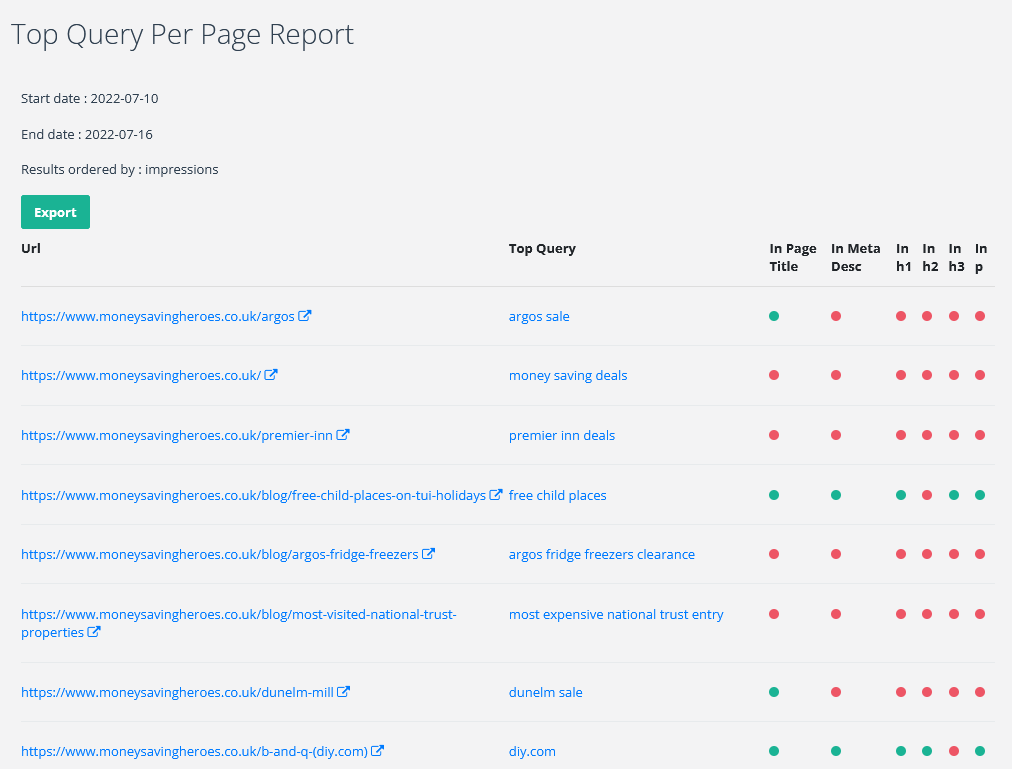
Low CTR Report by Page
This easy-to-use report is a great starting point to identify pages that could do with some click-through rate improvements. A low click-through rate for the page as a whole could be fixed in a number of ways, but it’s always worth checking if the page title matches the search intent of the top queries the page is appearing in Google for.
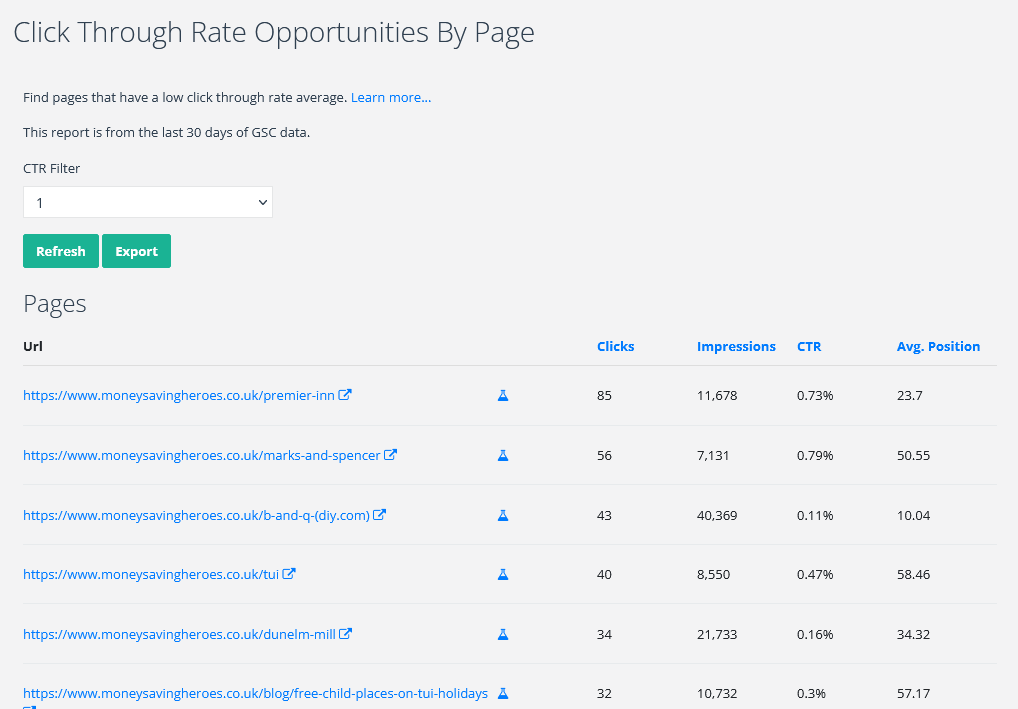
Low CTR Report by Query
Similar to the ‘Low CTR by Page’ report within SEOTesting, this report is an easy way to find page title optimization opportunities in no time at all. Simply order this report by number of impressions (largest to smallest), which will give you the queries that will produce the biggest positive impact.
Time to get Page Title Testing
So there you have it, a comprehensive guide on SEO page title testing, giving you everything you need to know. I’m confident that you can now go ahead and implement a testing regime that will help you improve your impressions, clicks, and click-through rate and then (hopefully) your revenue too!
If you’ve been swayed to give SEOTesting a try, you can do so for 14 days, completely free. Sign up today.


